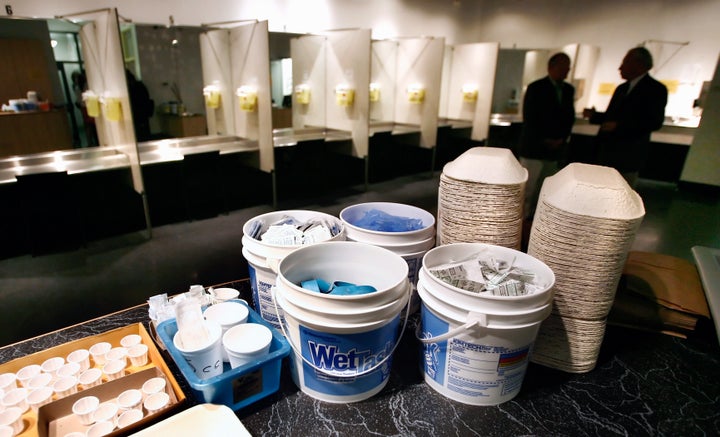
California Gov. Jerry Brown vetoed legislation Sunday that would have authorized a pilot program for the nation’s first safe injection site in San Francisco.
“Fundamentally I do not believe that enabling illegal drug use in government-sponsored injection centers — with no corresponding requirement that the user undergo treatment ― will reduce drug addiction,” Brown said when announcing the veto.
But reducing drug addiction isn’t the primary function of safe injection sites ― the supervised spaces where people can inject drugs under medical supervision in hygienic facilities ― according to harm reduction experts.
“He’s definitely missing the point in the sense that safer consumption spaces are specifically for people who are unable or unwilling to stop using,” said Jon Zibbell, a senior public health analyst at the nonprofit research group RTI International. “They are not designed to cure addiction.”
While getting people to stop using illegal drugs is a good general goal to have, the primary goal is to keep those people safe and alive.
Indeed, harm reduction advocates have long stressed that safe injection sites reduce needle sharing and infectious disease transmission, as well as save lives by reducing the risk of fatal overdoses, since medical professionals and the overdose-reversal drug naloxone are on the premises.
Safe injection sites also create an entry point into the health care system for people who inject drugs, including the possibility of addiction treatment.
Brown’s rejection echoes the criticisms Deputy Attorney General Rod Rosenstein lodged against safe injection sites in a New York Times op-ed in August, in which he suggested that safe injection sites normalize drug use and claimed that they would make the opioid crisis worse. The Justice Department has threatened to crack down on any site that does open.
Zibbell noted that similar arguments were used against clean needle exchanges and naloxone in the 1990s and 2000s, both of which have since gained wider acceptance.
“We’d be making progress on drug policy if government officials felt obliged to cite at least some legitimate reasoning in rejecting or accepting different approaches,” said Kathleen Frydl, historian and author of The Drug Wars in America. “Right now, whether it’s Gov. Brown or Deputy Attorney General Rod Rosenstein, they evidently feel none whatsoever.”
The Rosenstein op-ed was widely criticized by researchers, doctors and policy experts, including Frydl. More than 100 signed a response to the op-ed, calling out its inaccuracies and unfounded claims.
Further evidence in favor of safe injection sites came last week, when a widely shared meta-analysis claiming that safe injections sites weren’t as effective as previously thought was retracted by the journal it was published in.
Cities including New York, Philadelphia and Seattle are considering implementing safe injections sites like the ones that operate in Europe and Canada, but currently there are no authorized facilities operating in the United States.
